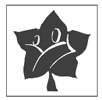Châteauneuf-du-Pape history
The vineyard of Chateauneuf du Pape was probably founded by Romans. The name Castrum Novum (which means New Castle in Latin) was first used in 1157 because of the castle that was just build. During the 12th century, the first vines appeared and the first wines’ references are dated 1321 during the stay of the Popes in Avignon. The first rule concerning vine growing in Chateauneuf du Pape is dated 1727. In 1922, the vintner’s Union decided to accept certain rules concerning the area of production, the production of grapes, the alcoholic percentage, the harvest, the tasting control of wines, Rosé was then banned.. These rules are the base of the nowadays regulation for the Controlled Appellation which was given to Chateauneuf in 1936.
Red Châteauneuf-du-Pape
Main production of the famous AOC, the red wine of Châteauneuf-du-Pape is the true flagship of the wines of the Rhône Valley. Known throughout the world for its famous terroirs of rolled pebbles, it produces wines with intense colours and powerful, fine and complex aromas. The rich aromas of ripe fruit, truffle, mushroom and undergrowth dominate; they are accompanied by spicy and wild notes of the Provençal garrigue.
White Châteauneuf-du-Pape
Like the Cairanne appellation, Châteauneuf du Pape produces much less white wines than red wines, accounting for only 7%. But its fame is much more important. Known for its 13 grape varieties, this Cru allows 6 white grape varieties: Grenache blanc, Clairette, Roussanne, Bourboulenc, Picpoul and Picardan. Grenache blanc, a mutation of Grenache noir, is the most commonly used grape variety. Not very acidic, it provides structure and length in the mouth alongside the more floral Clairette and Bourboulenc, and the more lively Picpoul.
The Controlled Appellation
The area of appellation is 3200 ha large, composed of Chateauneuf du Pâpe, Courthezon, Bédarrides and Orange. 13 grape varieties are allowed (Red grapes: Grenache, Syrah, Mourvèdre, Cinsault, Vaccarèse, Terret, Counoise, Muscardin. White grapes: Grenache, Roussanne, Clairette, Bourboulenc, Picardan, Picpoul). The maximum yield is 35 hectoliters per hectare and the minimum percentage of alcohol is 12.5%.
Terroir
What make the soil of Chateauneuf du Pape interesting are the famous pebbles which keep the heat all day long and restore it during the night. The sun and the wind called Mistral are both very important factors to the micro climate of this region.








